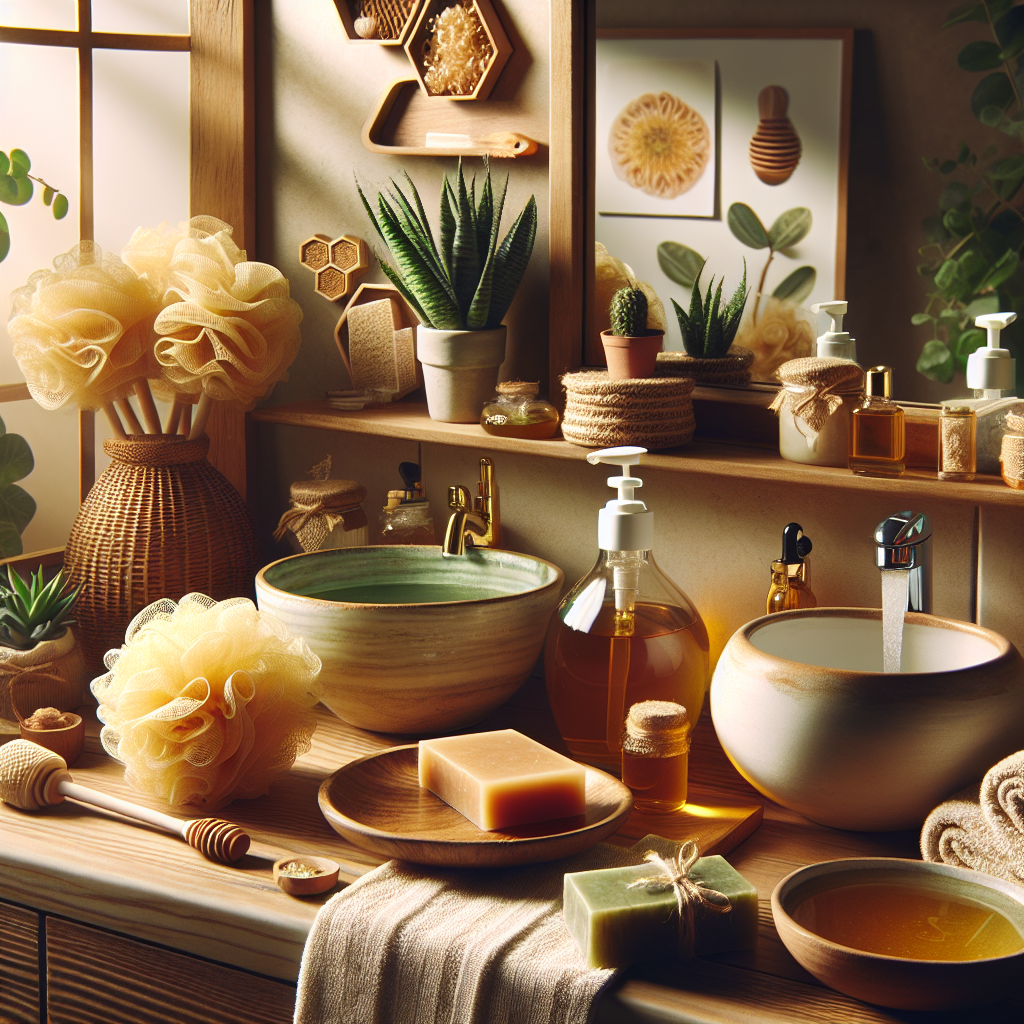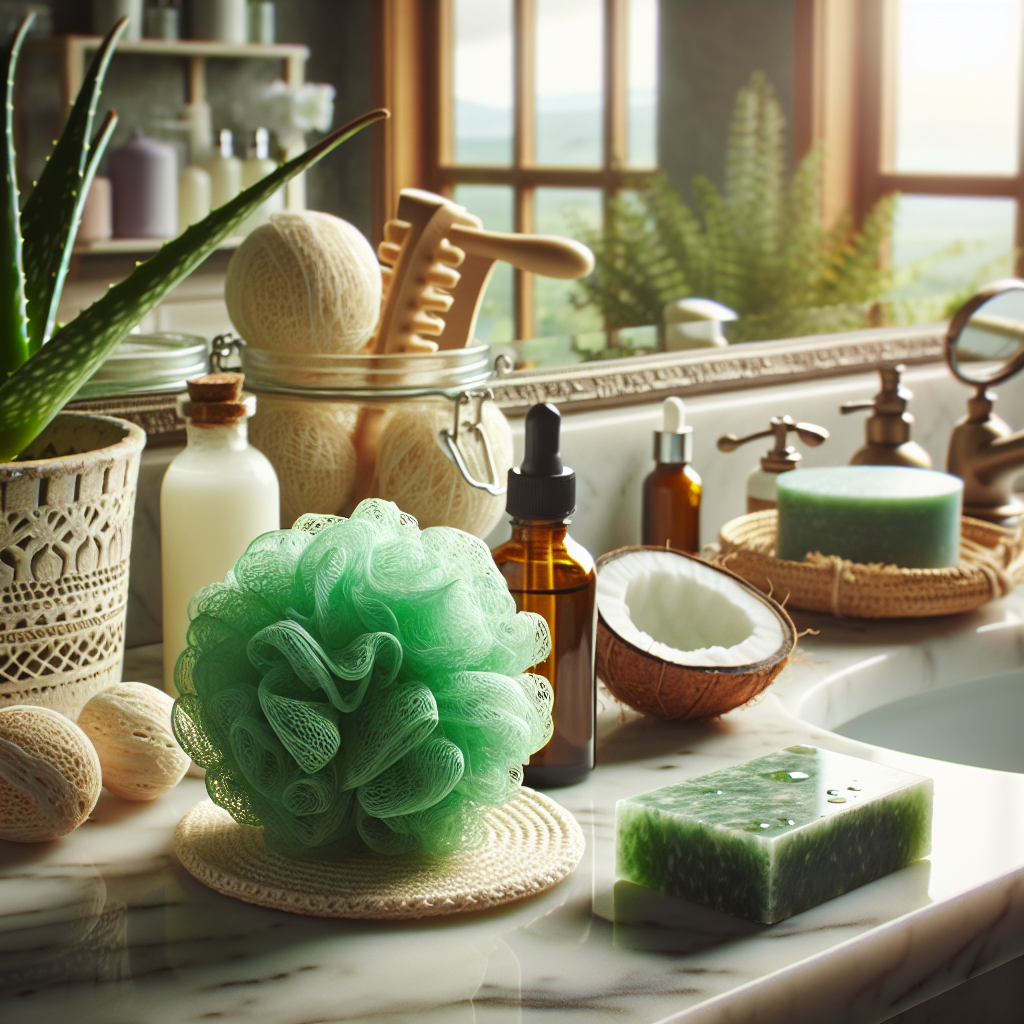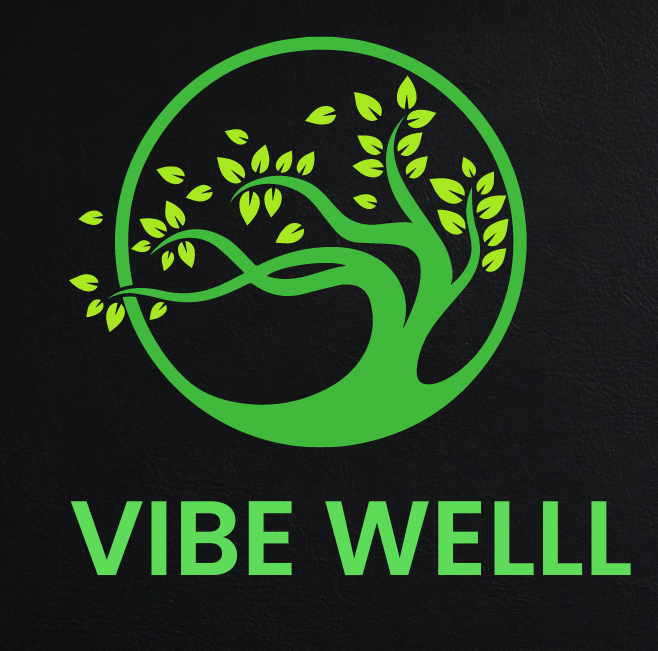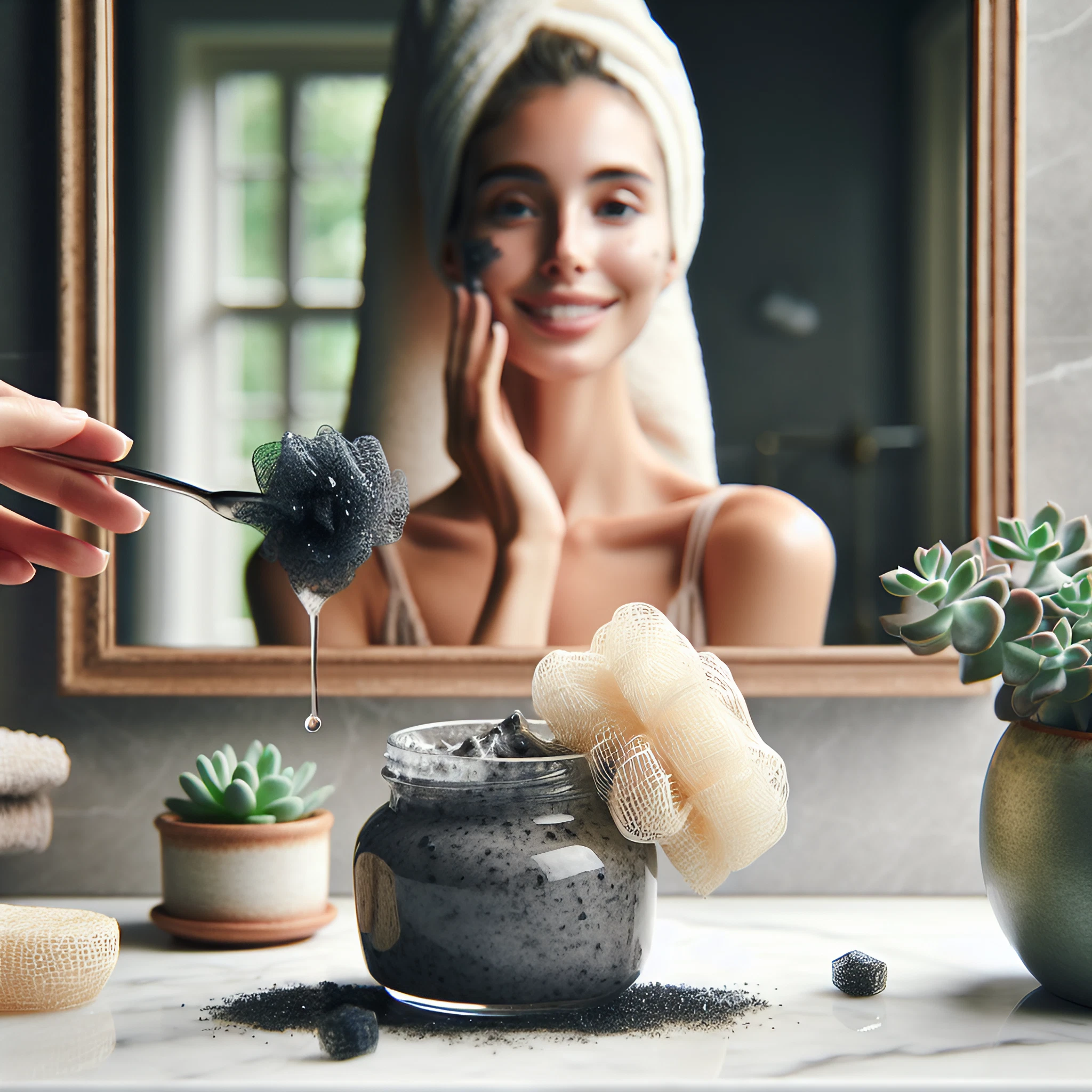Introduction to Loofa
The loofa, sometimes known as a luffa, is a natural sponge with a peculiar personality. Combining exfoliation with renewal, it is a skincare routine powerhouse. luffahave a long history of use due to their remarkable cleansing and revitalizing properties. These eco-friendly luffa washcloths and other accessories are crafted from the plant’s fibrous inner bark and will add a natural element to your bathroom routine.
Understanding the Loofah: What Is It?
A tropical and subtropical vine that is indigenous to South Asia and Southeast Asia is the loofah plant, also known as Luffa aegyptiaca or Luffa cylindrica. Upon reaching complete maturity, the fibrous interior of the luffa fruit is dried and processed to produce the luffa sponge. Unlike synthetic sponges, luffa are wholly natural, biodegradable, and free of harmful chemicals, rendering them an eco-friendly skincare option.
The Role of Exfoliation in Skincare
Proper exfoliation is essential for the preservation of radiant, healthy skin. It entails the excision of decaying skin cells from the skin’s surface, which enables the growth of new cells. Regular exfoliation is beneficial for the skin’s overall texture and appearance, as it prevents acne and unclogs pores. This procedure also enhances blood circulation, which stimulates the appearance of a more youthful and radiant complexion. A loofah is a highly effective tool for attaining these results, as it provides both mechanical and manual exfoliation benefits.
Types of Loofahs
Before integrating a luffa into your skincare routine, it’s essential to understand the different types available:
- Natural luffas: These are the perfect choice for individuals who are in search of an eco-friendly and natural exfoliating option, as they are derived from the fibrous interior of the luffa plant. Texture varies among them, ranging from coarse to soft, contingent upon their maturation and processing.
- Synthetic Loofahs: These luffa are frequently less abrasive and gentler than their natural counterparts, as they are constructed from plastic or other synthetic materials. Although they provide a gentle exfoliation, they are not as environmentally beneficial as their natural counterparts.
- luffa Pads and Mitts: These luffas are designed for effortless handling and are available in a variety of sizes and shapes, making them ideal for exfoliating different body regions.

Benefits of Using Loofa
Exfoliation
The natural exfoliating properties of luffa are widely recognised. It reveals smoother, gentler skin by eliminating dead skin cells and impurities. luffas helps prevent congested pores and promotes a clear complexion through regular exfoliation.
Improves Circulation
The utilisation of a luffa can result in the stimulation of blood flow, which can result in the development of healthier, more radiant skin. The looofa’s gentle friction enhances circulation, thereby supplying essential nutrients to your epidermis cells.
Prevents Ingrown Hairs
Are you experiencing difficulty with ingrown hairs? The exfoliating action of luffa can be beneficial. By removing dead skin cells, it prevents hair follicles from becoming clogged, thereby reducing the incidence of excruciating ingrown hairs, particularly after shaving or waxing.
Enhances Skin Texture
The texture of your skin can be substantially enhanced by the consistent use of a luffa. It eliminates rough patches and imparts a gentle, even texture to your skin.
Stimulates Cell Renewal
The production of new epidermis cells is stimulated by the use of a luffa. This promotes a vibrant and radiant appearance by supporting the skin’s natural renewal process.
Supports Product Absorption
Your skin is more adept at absorbing moisturizers and other hygiene products following an exfoliation. By eliminating the barrier of dead skin cells, looofa guarantees that your hygiene products are more effective and penetrate deeper into the skin.
Natural and Sustainable
Loofa’s environmental friendliness is one of its most alluring qualities. This is a sustainable exfoliation option that is a popular choice among individuals who are dedicated to a green lifestyle.
How to Use Loofa
Incorporating loofa into your skincare routine is simple and rewarding. Here’s a step-by-step guide:
- Hydrate Your Loofa: Before using, soak your luffa in warm water for a few minutes to soften it.
- Apply Cleanser: Squeeze a dollop of your Favorite body wash or soap onto the luffa.
- Gently Scrub: In circular motions, gently scrub your body, focusing on rough areas like elbows, knees, and feet. Avoid sensitive areas.
- Rinse Thoroughly: Rinse your body and the luffa thoroughly with warm water.
- Hang to Dry: After use, hang your loofa in a well-ventilated area to dry completely, reducing the risk of bacterial growth.
Choosing the Right Loofa
Selecting the best luffa depends on your skin type and needs:
- Sensitive Skin: opt for a finer-textured luffa to avoid irritation.
- Normal to Oily Skin: A coarser luffa can provide more effective exfoliation.
- Body vs. Face: Use a separate, softer luffa for your face to prevent damage to the delicate facial skin.
Brands like The Body Shop, Amazon (for online order), Eco Tools, and Hydrae London offer high-quality luffa that cater to various skin types.

Precautions and Considerations
While loofa offers numerous benefits, it’s important to use it correctly to avoid skin irritation or damage:
- Frequency: Limit use to 2-3 times per week to prevent over-exfoliation.
- Hygiene: Replace your luffa every 3-4 weeks to maintain hygiene and effectiveness.
- Allergies: If you have plant-based allergies, conduct a patch test before using luffa extensively.
Addressing Common Concerns
While luffas offer numerous skincare benefits, there are some common concerns that users should be aware of:
1. Skin Irritation
Using a loofah too aggressively or on sensitive skin can lead to irritation. If you experience redness, itching, or discomfort, reduce the frequency of use or opt for a softer luffa.
2. Hygiene Issues
Loofahs can harbor bacteria if not properly cleaned and dried. To maintain hygiene, wash your luffa regularly with hot water and soap, and replace it frequently.
3. Not Suitable for All Skin Types
Individuals with extremely sensitive or acne-prone skin should consult a dermatologist before using a luffa. In some cases, other exfoliating methods may be more suitable.
Eco-Friendly Aspect
Loofa is distinguished not only by its hygiene advantages but also by its environmental sustainability. It is a zero-waste exfoliation option due to its biodegradability and composability. luffa is an environmentally friendly product that can be incorporated into the daily regimen of environmentally conscious consumers.
Conclusion
The health and appearance of your skin can be substantially improved by incorporating a loofah into your skincare routine. A luffa provides a variety of benefits, including enhanced blood circulation and effective exfoliation, that contribute to the development of more radiant, smoother skin. You can achieve all the benefits of this natural skincare tool while minimizing potential risks by selecting the appropriate loofah, utilizing it correctly, and adhering to good hygiene practices. luffa are a versatile and environmentally sustainable addition to any skincare regimen, whether you are seeking to rejuvenate your skin, prevent acne, or simply enjoy a more refreshing cleansing experience.
Reviews About Loofa
Beauty Blogger Testimonial
Over a three-month period, Emily, a renowned beauty blogger, observed a reduction in ingrown hairs and a noticeable improvement in her skin texture as a result of incorporating loofa into her hygiene routine. “The luffa has been a game-changer for my skin!” She reports, “I have observed a decrease in the number of ingrown hairs, in addition to the fact that it feels smoother.”
Spa Case Study
As part of their signature treatment, a luxury retreat implemented loofa exfoliation. Clients observed substantial enhancements in their skin’s radiance, as evidenced by their before-and-after photographs. “The luffa treatment is highly regarded by our clients.” According to the leisure manager, it results in a radiant and revitalized complexion.
Dermatologist Interview
Dr. Sarah Johnson, a dermatologist, elaborates on actual instances in which patients experienced improvements in their keratosis pilaris and acne disfigurement as a result of using loofa products. “luffa has the potential to be a beneficial treatment for specific skin conditions.” Nevertheless, it is crucial to employ it appropriately in order to prevent irritation, she suggests.
Research Study
A study conducted by a skincare research group highlighted the effects of loofa exfoliation on product absorption. Participants’ skin showed a significant increase in hydration and product efficacy after regular luffa use.
DIY Loofa Skincare Recipes
Exfoliating Body Scrub
- 1 cup of sugar
- 1/2 cup of coconut oil
- 1 tablespoon of finely chopped luffa
Mix the ingredients and use in the shower to exfoliate and moisturize your skin.
Foot Scrub
- 1/4 cup of Epsom salt
- 1 tablespoon of olive oil
- 1 teaspoon of finely chopped loofa
Combine the ingredients and gently scrub your feet to remove dead skin and rough patches.
Facial Cleansing Pads
Cut small squares of loofa and soak them in your favorite facial cleanser. Use them to gently exfoliate and cleanse your face.
Scalp Exfoliator
- 2 tablespoons of finely chopped loofa
- Your regular shampoo
Mix the luffa with your shampoo and massage into your scalp to exfoliate and promote healthy hair growth.
What is a luffa, and how is it used in skincare?
Are loofahs safe for all skin types?
How often should I use a luffa?
Can using a loofah help prevent ingrown hairs?
What are the environmental benefits of using a natural luffa?
Is it safe to use a loofah on the face?
Can loofahs cause skin irritation?
How do I choose the right loofah for my skin type?
For sensitive skin, opt for a softer, finer-textured luffa to minimize irritation.
For normal to oily skin, a coarser loofah can provide more effective exfoliation.
Use a separate luffa for the face, one that is softer and specifically designed for facial use.

